Everything has its conclusion, but personal transportation relying on internal combustion engines will continue to be part of our lives for a few more years.
Nevertheless, the prevailing trend of downsizing suggests that it’s highly likely each manufacturer has already manufactured an engine larger than any they will produce in the future.
Here, we examine examples from 40 automotive brands, listed in ascending order of capacity. To clarify, our focus is on engines utilized in vehicles accessible to the general public, even if in limited quantities. Hence, competition cars, record breakers, dump trucks, and similar vehicles are not included. Let’s delve into the details:
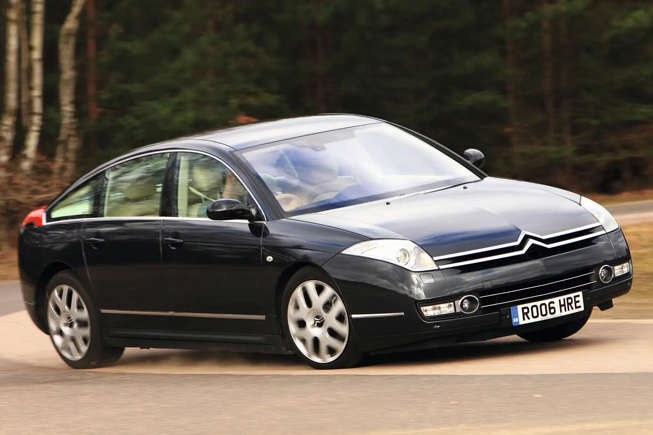
Citroen: 3.0 litres
At the top of this list, Citroën’s inclusion is notable as one of the few powered by diesel. The Peugeot-Citroën-Ford V6, initially displacing 2720cc and featured in the C5 and C6 saloons, underwent an upgrade in 2009 to a larger 2993cc version with 237bhp and 332lb ft—surpassing the power of many larger engines discussed later. This engine found extensive use in Jaguars and Land Rovers.
For reference, Citroën’s SM grand tourer also employed a 3.0-liter V6, but slightly smaller at 2978cc.
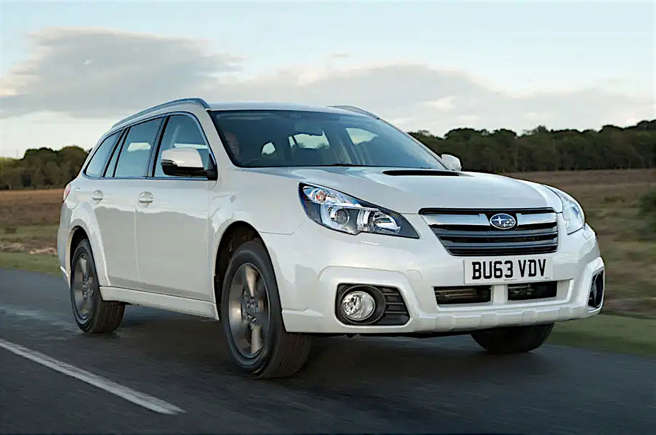
Subaru: 3.6 litres
In contrast to some other Japanese manufacturers, Subaru has not pursued the route of employing exceptionally large engines, opting instead for turbocharging over increased displacement when aiming for high power outputs. The most substantial engine in their lineup is a 3.6-liter flat-six, introduced in 2010 and utilized in the Legacy and Outback (known as the Lancaster in its domestic market), as well as the Tribeca SUV.
Subaru did venture into creating a 3.5-liter flat-12, primarily intended for F1 and other motorsports applications, although it is not considered among the brand’s most notable achievements.
IMAGE: 2014 Subaru Outback
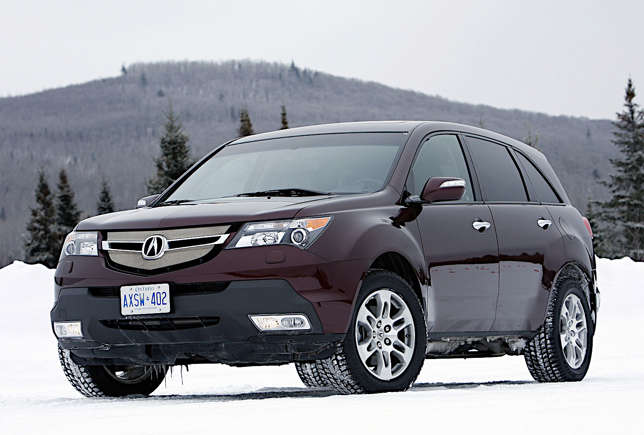
Acura: 3.7 litres
Honda’s luxury brand has incorporated the largest engine from the Japanese manufacturer’s V6 J-Series family into various models, including the RL and TL sedans, as well as the MDX and ZDX crossovers.
Initially commencing at 2.5 liters, the J37 engine measured 3664cc. Acura reported its output at 300bhp and 270 lb ft, deeming it the most potent engine in the brand’s lineup upon its introduction, although it has since been eclipsed in this regard. The current MDX no longer features this engine, and the other models have been discontinued.
IMAGE: 2007 Acura MDX

Honda: 3.9 litres
The 3.7-liter V6 previously mentioned in the context of Acura found application in the fourth-generation Legend, the non-US counterpart of the Acura RL. However, it doesn’t stand as the largest engine fitted to a Honda-branded road vehicle. In November 1993, Honda introduced its inaugural Crossroad model to the Japanese market, featuring the company’s first and, to date, only automotive V8 with a capacity of 3946cc.
The Crossroad was essentially a first-generation Land Rover Discovery manufactured in Solihull by Rover, with which Honda had a partnership at the time, and then exported to Japan with different badges.
A subsequent model with the same name was equipped with smaller, four-cylinder engines. In September 2023, Honda unveiled its initial commercially available V8 of proprietary design, boasting a capacity of 4952cc, intended exclusively for marine use.
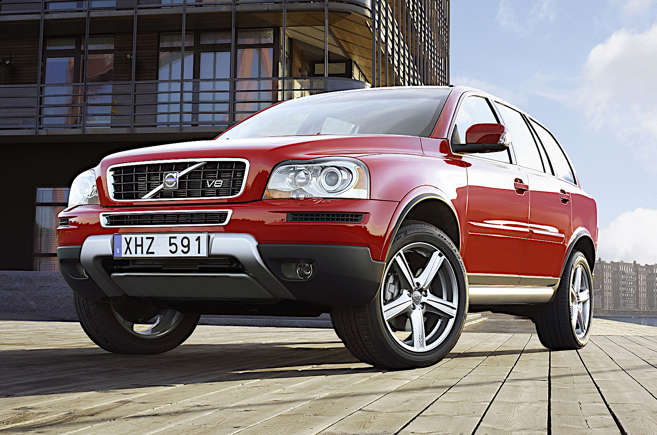
Volvo: 4.4 litres
Once a broader conglomerate encompassing both car and heavy goods vehicle production, Volvo’s latter division, now distinct from car manufacturing, engineered engines as sizeable as 16.0 liters. On the automotive front, Volvo’s most substantial internal combustion engine is a 4414cc V8, developed in collaboration with Yamaha. This engine found application in the XC90 SUV (depicted) and the S80 saloon, delivering 311bhp and 324lb ft.
Polestar Racing took this engine a step further, creating a 4989cc variant with a maximum output of approximately 650bhp. This modified engine powered an S60 silhouette racer that competed in the Australian V8 Supercars series.
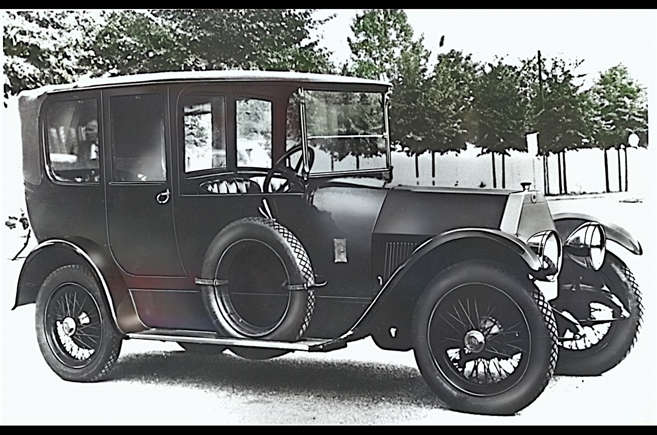
Lancia: 4.9 litres
While renowned for producing numerous high-performance cars, Lancia is not typically associated with large-capacity engines. Its personal record has endured for over a century, set at 4942cc—the size of a four-cylinder motor installed in the Theta, notably one of the earliest European cars featuring electric lights and a starter, produced from 1913 to 1918.
Additionally, Lancia crafted narrow-angle V12 engines with capacities of 6.0 and 7.2 liters, but these were never incorporated into cars available to the public. Significantly larger V12s that did see production were exclusively employed in aircraft.
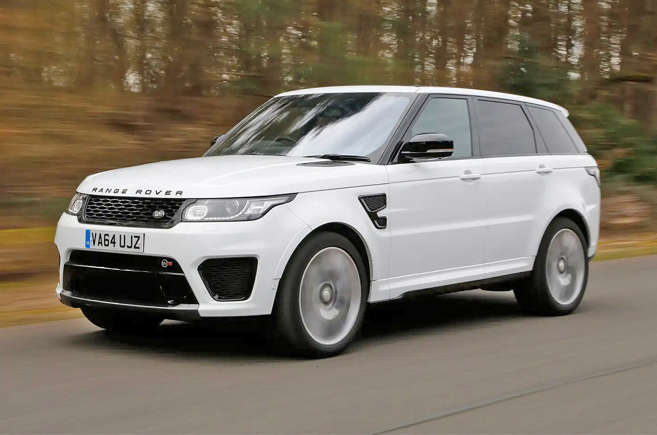
Land Rover: 5.0 litres
Starting from 2009, there have been Jaguars, Land Rovers, and Range Rovers equipped with a V8 engine that measures almost precisely 5.0 liters. While it may not be the largest ever fitted to a Jaguar, it does hold the record for the other two brands.
Despite some Jaguar versions having higher outputs, the most powerful examples used in Range Rovers, including the Sport SVR (depicted), which our staff members described as “widely admired yet not roundly loved,” boast a maximum power of 567bhp and peak torque of 513lb ft.

Infiniti: 5.6 litres
The most sizable engine ever installed in an Infiniti is a 5552cc V8 developed and manufactured by the parent company Nissan, representing the highest-capacity version of a unit that originated as a 4.5-liter engine.
This engine has been featured in the M56 and the Q70 executive saloons, serving as the sole engine option in the two generations of QX80 (initially named QX56) produced to date.
IMAGE: 2022 Infiniti QX80

Nissan: 5.6 litres
The 5552cc V8 engine from Infiniti, previously mentioned, holds the distinction of being the largest engine ever installed in Nissans offered for public sale. It finds application in the Titan pickup truck and various SUV models, including the Armada, Patrol, and Pathfinder, as well as several competition cars.
While Nissan has developed an even more massive 6373cc V8, experiencing a vehicle powered by it is an exclusive affair, limited to those who are part of or closely associated with Japanese royalty.
IMAGE: 2024 Nissan Titan
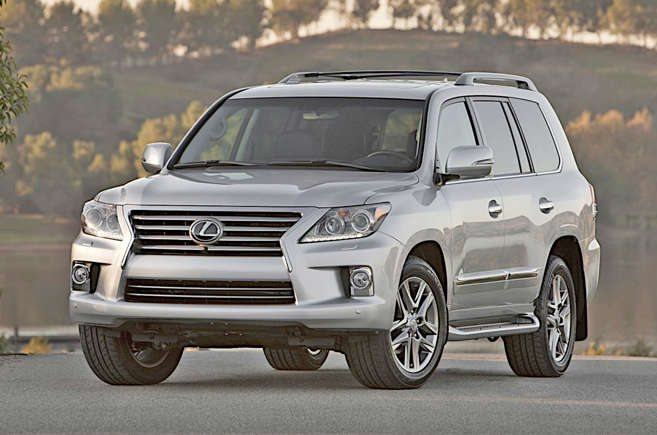
Lexus: 5.7 litres
The third-generation Lexus LX SUV and its counterpart, the Toyota Land Cruiser, were both available with a 5663cc V8, the largest engine ever fitted to a vehicle of either brand. Supercharger kits were available, but in standard form the motor, codenamed 3UR-FE, had power and torque figures of 383bhp and 403lb ft.
The V8 was not carried to over to the current LX, which is powered by a lower-capacity turbocharged engine.
PICTURE: 2013 Lexus LX 570
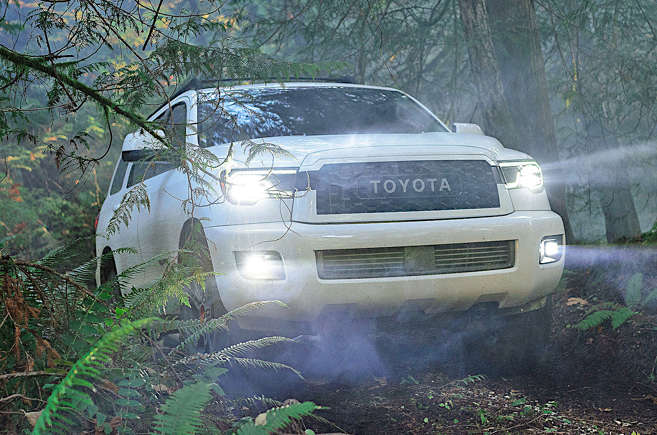
Toyota: 5.7 litres
In addition to the Lexus LX, Toyota’s 5663cc 3UR-FE V8 has been employed in its close relative, the Land Cruiser.
This powerful engine has also been installed in two other robust Toyota vehicles—the Sequoia SUV and the Tundra pickup. Both models have recently transitioned into their third generations, with each seeing the 5.7 engine replaced by smaller turbocharged engines.
IMAGE: 2020 Toyota Sequoia
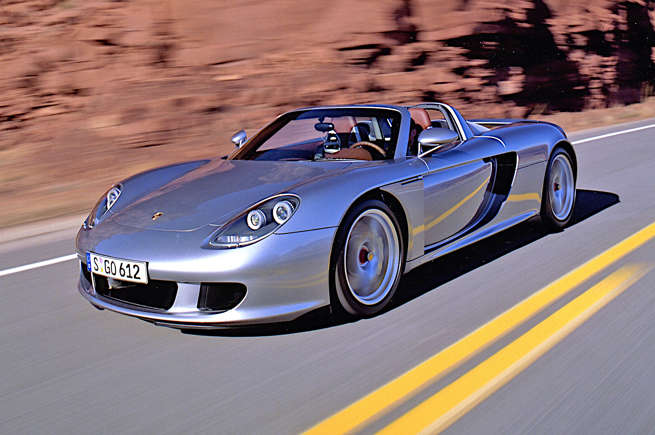
Porsche: 5.7 litres
The most substantial engine incorporated into a production Porsche is also the sole V10 in the brand’s lineup. Initially designed for motorsport, although it was never utilized for that purpose due to a rule change, it featured in the mid-engined Carrera GT sports car with a carbon-fiber monocoque, produced from 2004 to 2006.
Porsche asserts that adapting the 5733cc V10 for road use primarily entailed addressing noise and emissions regulations. The standard power and torque outputs were 604bhp and 435lb ft, achieved without the aid of forced induction.

Opel: 6.0 litres
With a history spanning over 160 years, Opel transitioned from manufacturing sewing machines and bicycles to producing cars in 1892. By 1928, it had ventured into the upscale market with the 24/110 HP Regent, featuring a formidable 5972cc straight-eight engine delivering an impressive 108bhp. The maximum speed reached 62mph, and with the optional Maybach-supplied overdrive, it could achieve a robust 81mph.
In 1929, Opel underwent a takeover by General Motors, and by that time, 25 Regents had been manufactured. However, due to concerns about internal competition with Cadillac, GM repurchased and scrapped all of them. Unfortunately, there are no known survivors of the 25 Regents.

Jaguar: 6.0 litres
The Jaguar V12 engine made its debut in the E-Type in 1971 and continued in production until 1997. Initially, it was a 5.3-liter engine, but in the late 1980s, it was expanded to 5993cc. At this size, it became available in the XJS sports car and the mechanically identical XJ12 and Daimler Double Six saloons.
For motorsport applications, such as in the Lister Storm, it was further enlarged to 7.0 liters and extended to 7.4 liters in the XJR12. However, for standard production Jaguars, the engine size was capped at 6.0 liters.
IMAGE: 1995 Jaguar XJ-S
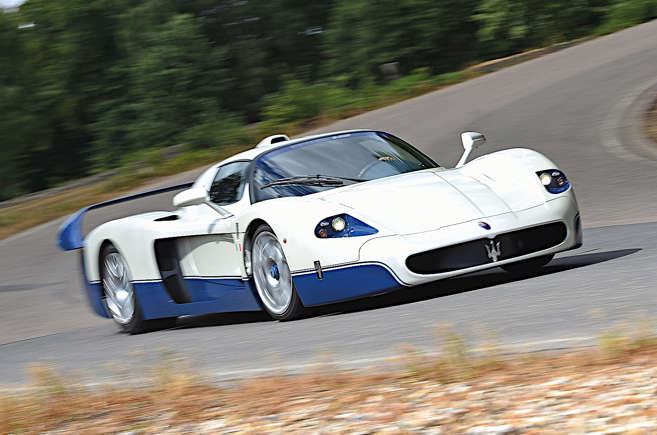
Maserati: 6.0 litres
The solitary engine surpassing 5.0 liters ever installed in a Maserati wasn’t actually a Maserati creation; rather, it was the Ferrari 140, which made its debut in the Enzo. Although Ferrari enlarged it to 6.5 liters, the 6.0-liter version found its place in the Enzo’s close relative, the Maserati MC12.
The road-going version of the MC12 was a homologation special created to enable the company’s participation in GT racing, where it achieved significant success. Various sources provide slightly different power outputs, but Maserati itself states that the engine produced a maximum of 621bhp.
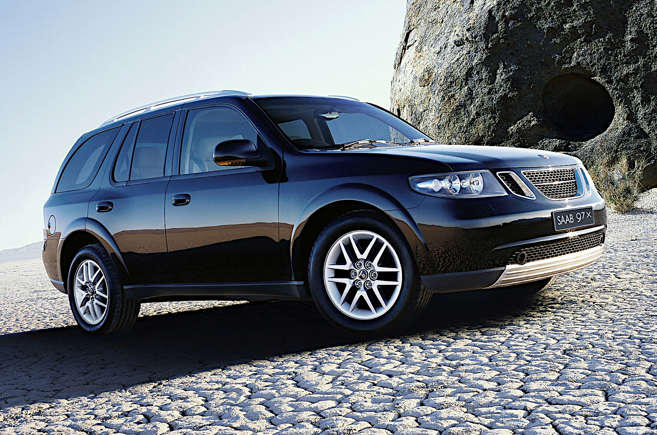
Saab: 6.0 litres
Enthusiasts may argue that both the 9-7X and the engine installed in the high-performance Aero version had little connection to Saab. The former shared a platform with various General Motors SUVs, including the Buick Rainier, Chevrolet Trailblazer, and Oldsmobile Bravada. Meanwhile, the latter featured the Chevrolet LS2 small block, also found in vehicles like the sixth-generation Corvette.
Nevertheless, the undeniable fact remains that this 5967cc V8 stands as the largest engine ever incorporated into a Saab-branded production car—and with just under 400bhp, it is also the most powerful.

Volkswagen: 6.0 litres
While the Volkswagen Group has introduced larger engines, the most capacious one employed in a car bearing a VW badge is the 5998cc iteration of the sole W12 designed exclusively for road use.
This engine generated 414bhp and 406lb ft in the Phaeton luxury saloon, and 444bhp and 443lb ft in the Touareg SUV. The variance resulted in the Touareg, despite being heavier and less aerodynamically efficient than the Phaeton, being marginally faster.
IMAGE: Volkswagen Phaeton W12

McLaren: 6.1 litres
The initial McLaren exclusively crafted for road use, as opposed to the previous race-influenced M6 GT, was the 1990s F1, featuring a more sizable engine than any McLaren model since. Developed by BMW, it shared the cylinder spacing of the German automaker’s inaugural production V12, introduced a few years earlier, yet was described by BMW as “an independent solution in all components.”
With a displacement of 6064cc, it marked the most extensive automotive engine manufactured by BMW up to that point. Since then, it has been surpassed in this regard only by one we’ll be introduced to shortly.
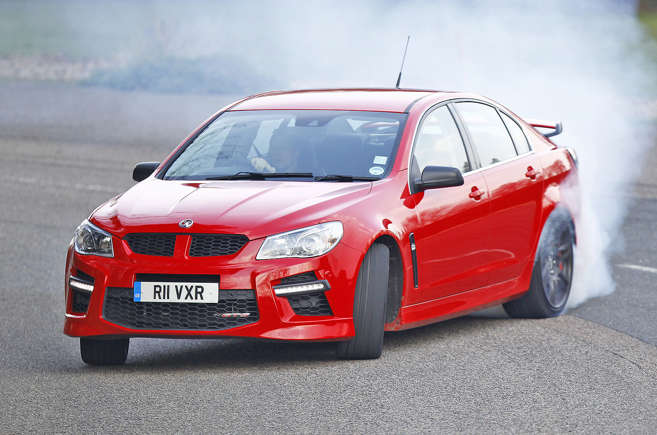
Vauxhall: 6.2 litres
Despite sporting a British badge, the VXR8 was, in reality, manufactured in Australia by Holden, a General Motors brand associated with Vauxhall at the time. The powertrains utilized in these vehicles were developed in the United States by Chevrolet.
The most substantial engine ever installed in this Vauxhall-branded road car, or any other for that matter, was Chevrolet’s 6162cc small-block V8. While the supercharged version featured a smaller compressor than the one found on the same engine in the Corvette ZR1, it still provided the large saloon with impressive power and torque ratings of 576bhp and 546lb ft.
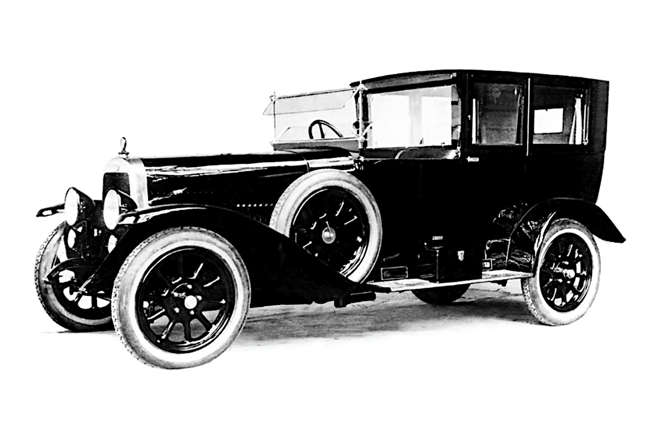
Alfa Romeo: 6.3 litres
In the 1920s, Alfa Romeo made a foray into the luxury car market with the G1, but encountered minimal success with almost no buyers.
With a displacement of either 6299cc or 6330cc, contingent on the information source, its robust straight-six stood as the most capacious engine ever installed in a production Alfa. While the maximum power and torque figures of 69bhp and 216 lb ft may seem modest by contemporary standards, they were deemed more than sufficient for the era.
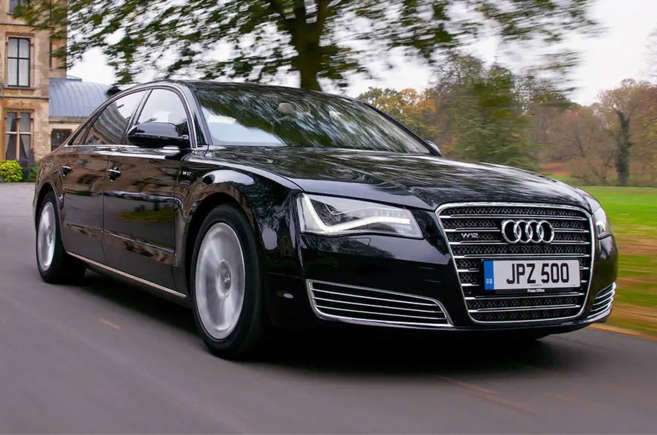
Audi: 6.3 litres
As mentioned earlier, Volkswagen’s W12 stands as the sole engine of its kind utilized in production road cars. In an effort to compensate for this limitation, VW has incorporated the W12 into various models, including the Phaeton, Touareg, Audi A8, and several Bentley models.
Typically boasting a capacity of 5998cc, there was a singular instance where this was increased to 6299cc in the third-generation, long-wheelbase Audi A8L. With power and torque reaching figures of 493bhp and 460lb ft, it marked the most potent among the naturally-aspirated versions, although not in the same league as the turbocharged 6.0s employed by Bentley.
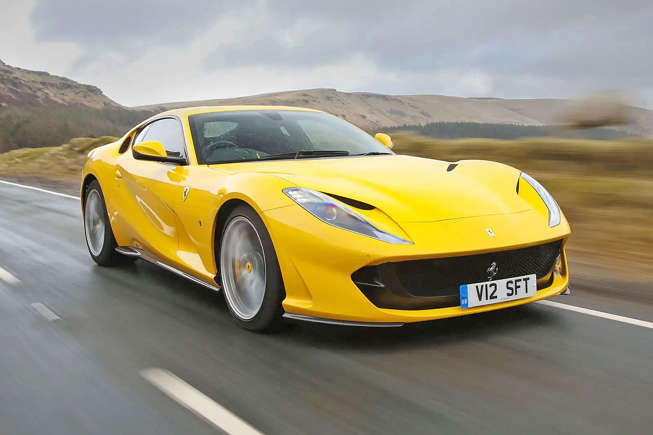
Ferrari: 6.5 litres
The Ferrari F140 V12 engine made its initial appearance in the Enzo in 2002, featuring a 6.0-liter capacity at the time. Since then, it has undergone several enlargements and modifications, now reaching 6496cc in its current iteration. This latest version is installed in models such as the 812 (and its derivatives), the SP1 and SP2 roadsters, the Daytona SP3, and the Purosangue SUV.
Power outputs vary, ranging from a relatively modest 715bhp in the Purosangue to a significantly more potent 829bhp in the Daytona SP3. However, the 812 Superfast and SP1/SP2 models surpass both in terms of torque, boasting a peak figure of 530lb ft.
IMAGE: Ferrari 812 Superfast

Lamborghini: 6.5 litres
Lamborghini’s inaugural V12 engine traces its roots back to 1964, debuting in the manufacturer’s first model, the 350 GT. Initially, it measured 3.5 liters, but as time progressed and it found its place in the Reventón and subsequent versions of the Murciélago, its displacement grew to 6.5 liters. Eventually, it was succeeded by another V12 engine, seemingly of the same size.
In actuality, the latter engine holds a slight advantage in size, measuring 6498cc compared to its predecessor’s 6496cc. The most recent iteration contributes 814bhp to the cumulative 1001bhp output of the Revuelto hybrid (depicted).
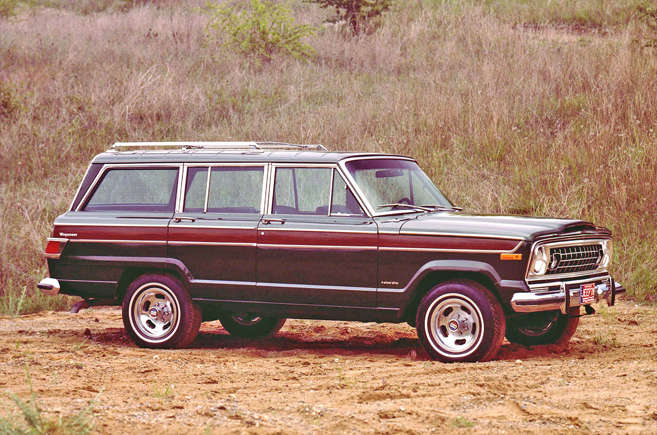
AMC: 6.6 litres
Among the numerous V8 engines developed by the American Motors Corporation, the most extensive one measured 6573cc and was initially rated at 255bhp and 345 lb ft, utilizing modern measurement methods. However, concerns regarding fuel economy and exhaust emissions led to substantial reductions in these figures during the 1970s.
The 6.6 engine found its place in AMC’s Ambassador, Javelin, and Matador models, as well as in AMC-owned Jeep’s Wagoneer and Cherokee. Consequently, it stands as the largest engine ever employed in a production Jeep, surpassing even the various Hemi V8s introduced since the brand’s acquisition by Chrysler.
IMAGE: 1978 Jeep Wagoneer Limited
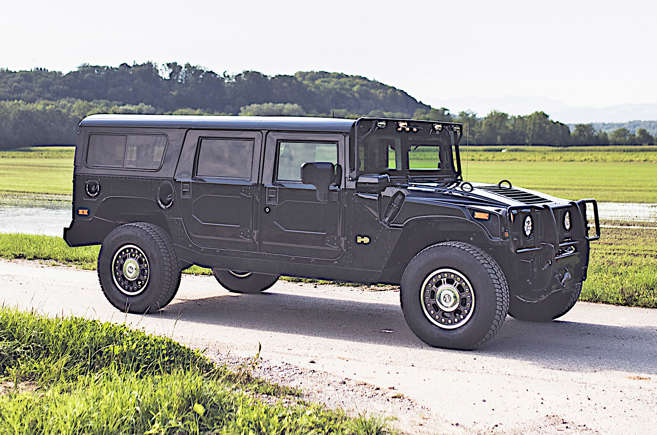
Hummer: 6.6 litres
Until its recent transformation into an all-electric sub-brand under GMC, Hummer was known for crafting vehicles equipped with sizable, fuel-consuming, and not particularly environmentally friendly engines. While there is some validity to this perception, the engines were, in reality, not exceptionally large, at least when compared to those offered by other manufacturers on this list.
The most substantial engine, featured in the H1, was a 6619cc Duramax turbodiesel V8 developed by DMAX, a 60/40 joint venture between General Motors and Isuzu based in Dayton, Ohio. Subsequent Hummer models did not utilize engines exceeding 6.2 liters in size.
IMAGE: 2006 Hummer H1 Alpha
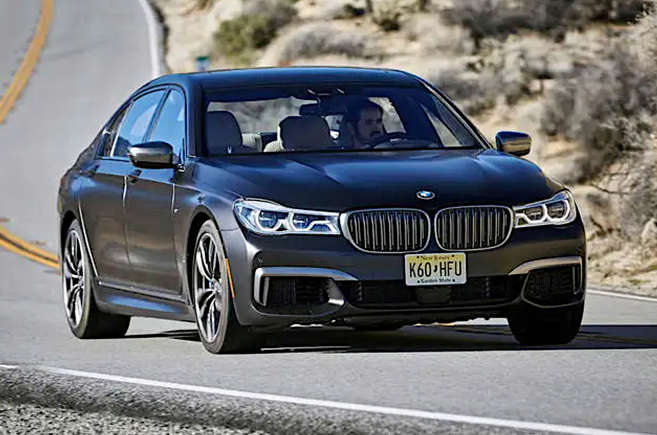
BMW: 6.75 litres
The L-Series V8 engine, found in numerous Rolls-Royce models, boasted a capacity of 6.75 liters. When BMW, the new owner, replaced it with a V12 in 2003, it continued the tradition by making the new engine almost precisely the same size, at 6749cc. This engine, along with its twin-turbocharged successor of identical size, has been propelling Rolls-Royce vehicles ever since.
As will be clarified later, it may not be the largest Rolls-Royce engine, but it holds the record for the most extensive one ever employed in a BMW production car, as the company also installed it in the 7 Series. While other BMW units have significantly surpassed it in size, they were exclusively used in aircraft, such as the BMW 801, a 41.8-liter 14-cylinder engine utilized in the Second World War’s Focke-Wulf Fw 190.
IMAGE: 2017 BMW M760Li xDrive

Fiat: 6.8 litres
During the First World War, Fiat initiated the construction of V12 aero engines, subsequently developing one for automotive application. Engine variants with capacities of 6809cc and 7490cc were crafted, yet only the former saw implementation in the 1921 Type 520, also recognized as the Superfiat. Historians speculate that, had it entered full-scale production, it could have posed a challenge to the Rolls-Royce Silver Ghost and Packard Twin Six. Despite displaying 520s at Motor Shows and offering them for sale, Fiat discontinued the project after producing an unknown but undoubtedly minimal quantity (usually estimated to be below half a dozen).
In the later part of the 1920s, another iteration of the 520 emerged, featuring a considerably smaller vehicle with a significantly more modest engine.
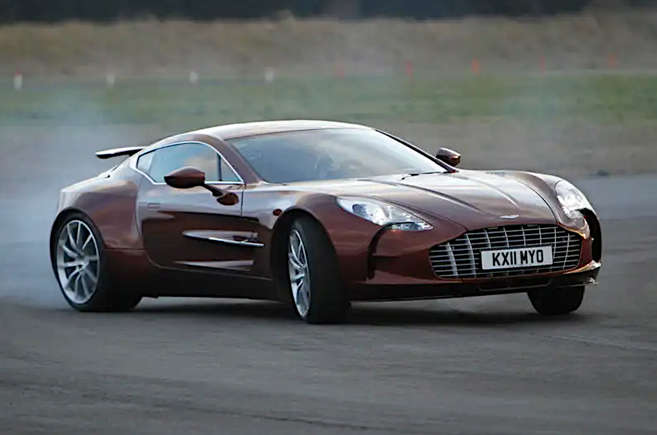
Aston Martin: 7.3 litres
The Aston Martin V12, initially introduced in the DB7 in 1999, shares a design lineage with the 3.0-liter Duratec V6, largely due to Ford’s ownership of the brand during that period. Initially measuring 5.9 liters, the V12 has seen various sizes since its inception.
As part of a development program conducted by Cosworth, its capacity was expanded to 7312cc. In the limited-production One-77 model, it generated 750bhp and 553lb ft. Further modifications for the even rarer Victor maintained the same capacity but increased the output to 836bhp and 606lb ft.
IMAGE: Aston Martin One-77
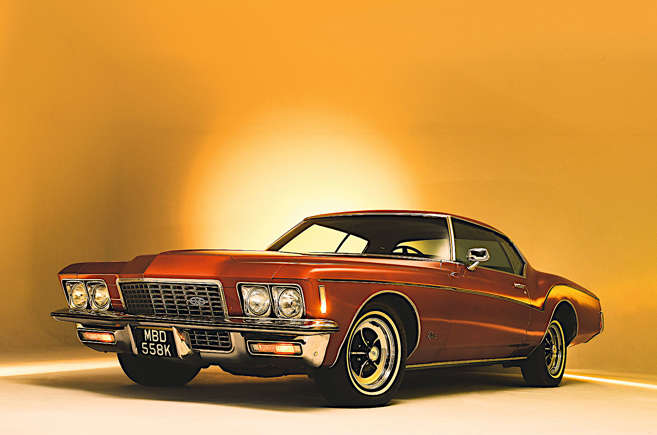
Buick: 7.5 litres
For the 1970 model year, Buick enlarged the capacity of its big-block V8 to 7.5 liters (or 455 cubic inches, as it was denoted at that time). In this configuration, it promptly became the standard engine for the Riviera, Electra 225, Wildcat Custom, Estate Wagon, GS 455, and GSX, also serving as an option in the LeSabre Custom.
Concerns related to economy and emissions initially hampered the engine’s performance and eventually led to its discontinuation. By the conclusion of the 1970s, the most potent Buick models were propelled by engines developed by other General Motors brands, with none matching the size of the erstwhile 455.
IMAGE: 1972 Buick Riviera
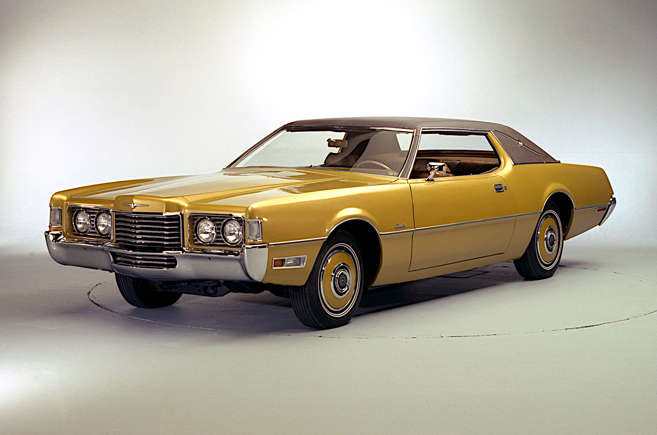
Ford: 7.5 litres
Ford’s 385 engine, a big-block V8, was manufactured in various sizes from the late 1960s until nearly the end of the century. The most extensive variant is commonly referred to as the 460, reflecting its capacity in cubic inches, which is approximately 7.5 liters.
Initially utilized exclusively in Lincoln models, it was subsequently incorporated into the Mercury and Ford lineups. The engine made appearances in the F-Series pickup truck, the E-Series van, and the sixth-generation Thunderbird. Ford has also marketed 8.4-liter and 9.4-liter iterations, but strictly as crate engines, never integrated into any production car either as a standard feature or an option.
IMAGE: 1972 Ford Thunderbird
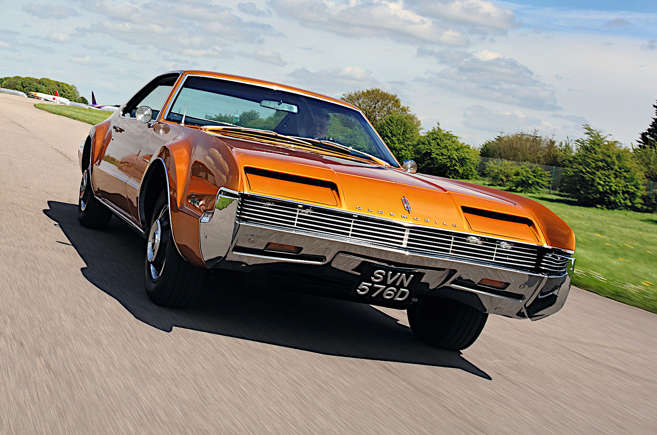
Oldsmobile: 7.5 litres
Among the three General Motors brand engines boasting capacities of 7.5 liters or 455 cubic inches, the Oldsmobile V8 was, in fact, the smallest. However, considering there was only about a 20cc difference, it’s a detail of minimal concern.
The Oldsmobile engine found application in rear-wheel drive models like the Cutlass and 442, the front-wheel drive Toronado (depicted in the picture), and, quite distinctly from the others, the GMC Motorhome.

Pontiac: 7.5 litres
Pontiac developed the slightly larger of the three General Motors 455ci V8s, with a 1970 update to an engine that originated at 6.9 liters in 1961 and experienced a minimal expansion to 7.0 liters in 1967.
This engine found its place in several Pontiac models in the early to mid-1970s, including the second-generation Firebird Trans Am. However, like its counterparts, it was phased out when very large engines fell out of favor, and Chevrolet took over as GM’s producer of high-performance V8s.
IMAGE: 1972 Pontiac Firebird Trans Am
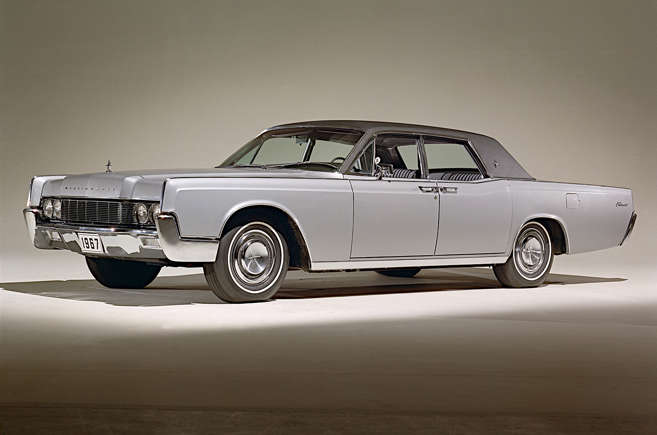
Lincoln: 7.6 litres
While, as mentioned earlier, certain Lincolns were equipped with the 7.5-liter Ford 385 big-block, it is not the largest engine ever employed by the brand. That distinction belongs to the highest-capacity variant of the earlier MEL V8, measuring approximately 7570cc.
This engine, at its full size, powered the fourth-generation Lincoln Continental, succeeding another MEL engine with a capacity of 7.0 liters. The car was manufactured from the 1961 to 1969 model years, but the 7.6 was only available from 1966 to 1968. Afterward, it was replaced by the slightly smaller 385.
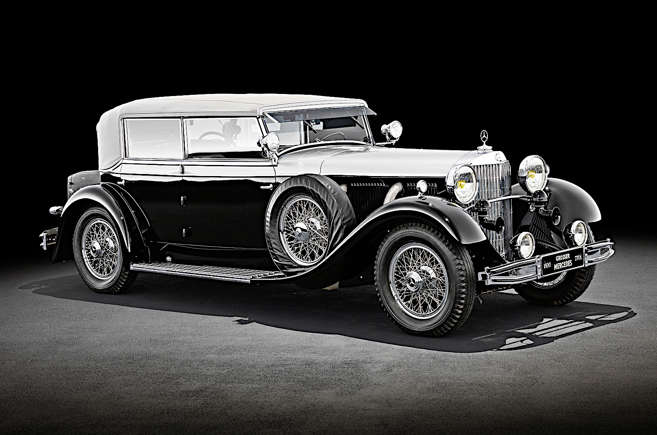
Mercedes-Benz: 7.7 litres
The 770, commonly referred to as the Grosser (or ‘grand’) Mercedes, was manufactured in two generations spanning from 1930 to 1943. In both instances, it featured a 7655cc straight-eight engine, initially available with a supercharger as an option, later becoming standard from 1938. The supercharger would engage when the driver applied full throttle.
In the earlier model, the engine yielded a maximum of 148bhp in its naturally aspirated state or 197bhp when supercharged. In the later iteration, the peak output increased to 227bhp.
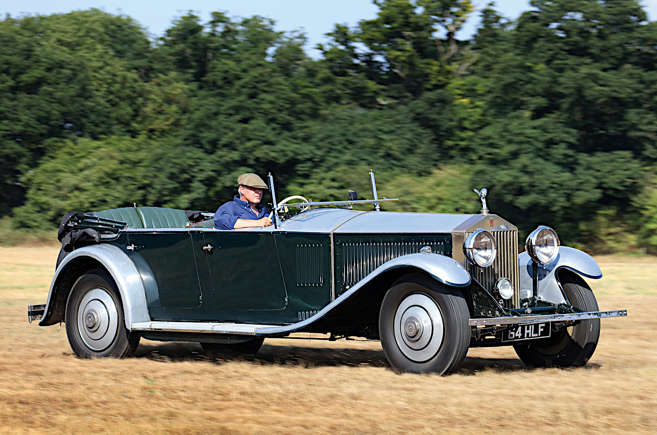
Rolls-Royce: 7.7 litres
The sidevalve straight-six engine of the Silver Ghost, initially measuring 7.0 litres and later enlarged to 7.4, was succeeded by a more modern overhead-valve unit featured in the 1925 Phantom. With a capacity of 7668cc, it stood as the largest Rolls-Royce car engine at that time. In 1929, the original head was substituted with a crossflow one for the Phantom II, although the capacity remained unchanged.
The substantial six-cylinder engine remained in production for a decade until it was supplanted in 1935 by the smaller yet more potent 7.3-litre V12 installed in the Phantom III.
PICTURE: 1930 Rolls-Royce Phantom II
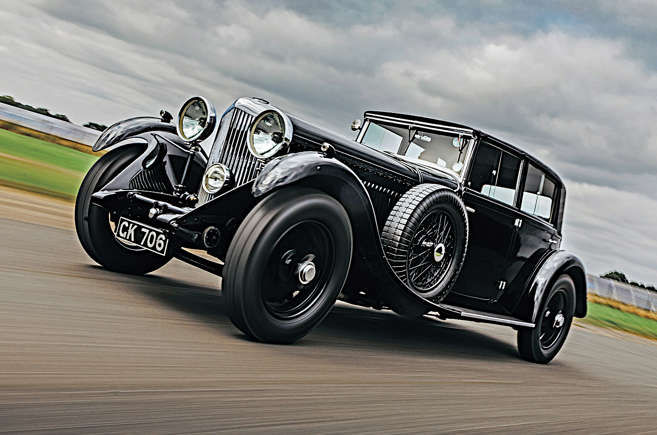
Bentley: 8.0 litres
In 1930, Bentley achieved its maximum engine capacity, a record it has not surpassed to this day. The straight-six engine installed in the car, aptly named the 8 Litre in accordance with Bentley’s straightforward naming policy of that era, boasted a displacement of 7983cc. Its power output ranged between 200bhp and 230bhp, depending on the specific tuning.
Shortly after the launch of the 8 Litre, Bentley faced financial challenges and went into receivership. It was subsequently acquired by Rolls-Royce. Despite changing ownership twice since then, neither of Bentley’s subsequent owners has mandated the creation of a larger engine than the iconic 8 Litre.
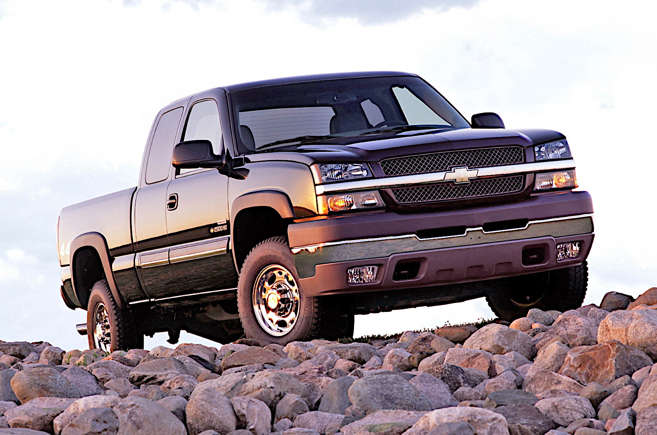
Chevrolet: 8.1 litres
Big-block Chevys have been dramatically enlarged for competitive purposes, reaching an astonishing 16.5 liters in the case of Sonny Leonard’s Godfather drag unit. However, the most extensive version employed in a production road vehicle is the Vortec 8100. This engine was offered in various Chevrolet SUVs, pickups, and vans during the early 2000s. Additionally, it found its way into mechanically identical GMC counterparts. Therefore, serving as not only Chevrolet’s most substantial production engine but also GMC’s.
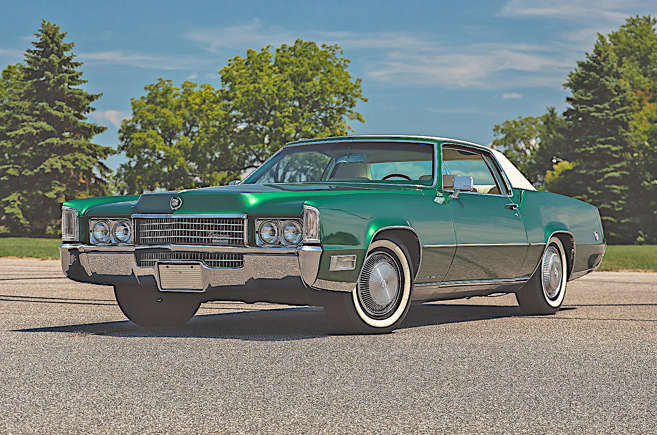
Cadillac: 8.2 litres
While Buick and other GM brands increased their engine sizes to 7.5 liters, Cadillac’s endeavors appeared relatively timid. Their existing V8 was already substantial at 7.7 liters, and for the 1970 model year, it underwent further expansion to reach 8.2 liters. It may now seem incredulous that such a behemoth powered the front wheels of the Eldorado it was installed in, but this was not uncommon in the US auto industry during that era.
Cadillac later extended the availability of the 8.2-liter engine across its model range, only to discontinue it when the production of such fuel-thirsty engines became unsustainable. To date, General Motors has not employed a larger engine in any of its production cars, and it is unlikely to do so in the future.
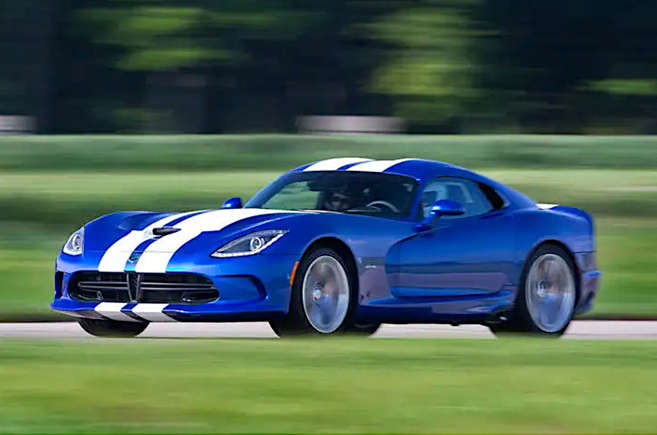
Chrysler/Dodge: 8.4 litres
The V10 engine in the Viper sports car initially had a displacement of 7990cc, which increased to 8285cc in 2003 and further expanded to 8382cc five years later. When the model was discontinued in 2017, the V10 stood as the largest engine fitted to any production car.
Market-wise, the Viper was branded as a Dodge in the US because, as stated by Chrysler executive Bob Lutz, it was considered “too big for Plymouth, too outrageous for the Chrysler brand.” In the UK, where the Dodge badge holds little significance, it was marketed as a Chrysler. In its final 8.4-liter form, the V10 surpasses any other engine offered by either brand.
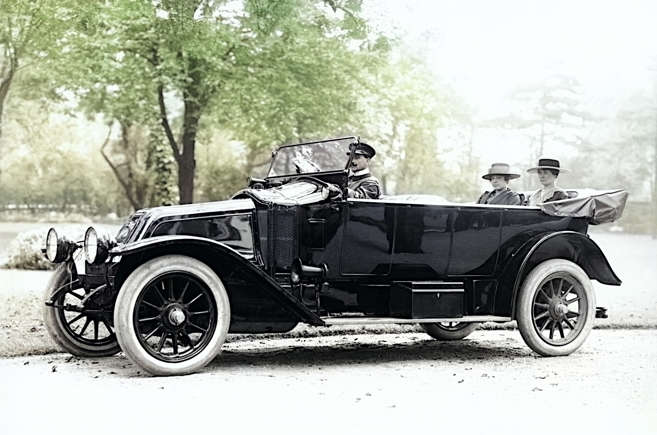
Renault: 9.1 litres
Before it became nationalized and, consequently, obligated to provide affordable transport for the mass market, Renault was precisely the type of company one would anticipate to manufacture a luxury car capable of triumphing in the Monte Carlo Rally.
This car was the 40CV, featuring a straight-six engine that commenced at 7539cc in 1911 and was expanded to 9120cc in 1920, a half-decade prior to the Monte Carlo victory. Just a year later, an aerodynamic single-seater variant achieved an average speed of nearly 108mph for a duration of 24 hours.
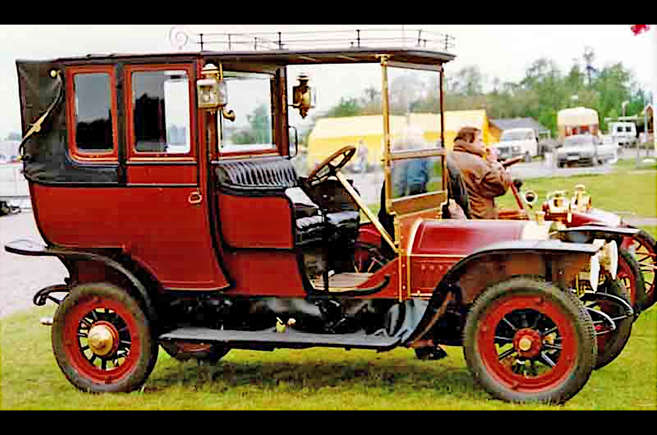
Peugeot: 11.1 litres
Peugeot, not typically associated with manufacturing large engines, surprised with a behemoth for the Type 105 of 1908. The company’s inaugural six-cylinder engine boasted a sizeable 11.1 litres and reputedly propelled the Type 105 to an impressive 60mph.
Given the formidable power and high cost, this mighty machine found limited appeal, resulting in Peugeot producing only 23 units over two years before redirecting its focus to different endeavors.
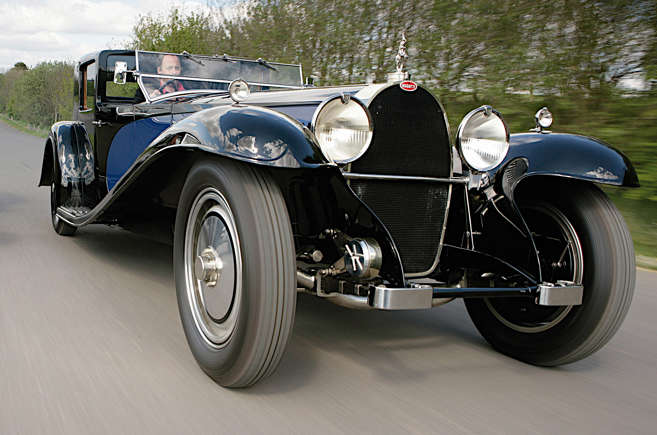
Bugatti: 12.8 litres
Bugatti has maintained Bentley’s tradition of an 8.0-liter maximum capacity in the 21st century. However, similar to Bentley, Bugatti once engineered an engine whose colossal size remains unmatched since the 1930s. The Type 41, famously known as the Royale, boasted a straight-eight with a substantial 12.8 liters, a magnitude surpassed in production cars only by the 13.5-liter giants crafted by Peerless and Pierce-Arrow prior to World War I.
While commercially a failure due to its exorbitant cost, especially during the Great Depression, the Royale’s engine proved a success. The French state railway acquired numerous units, and these engines continued powering locomotives into the late 1950s.


GIPHY App Key not set. Please check settings